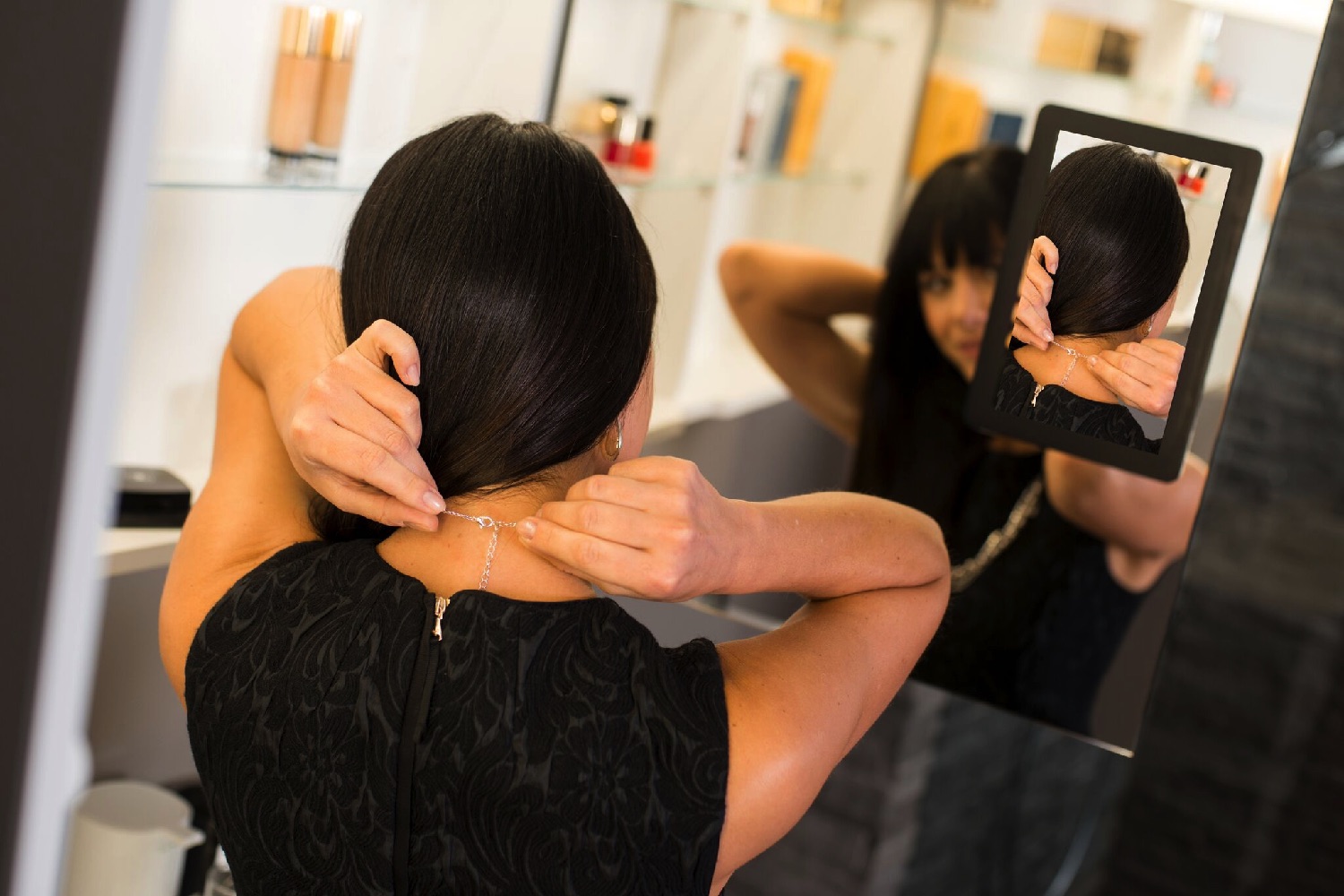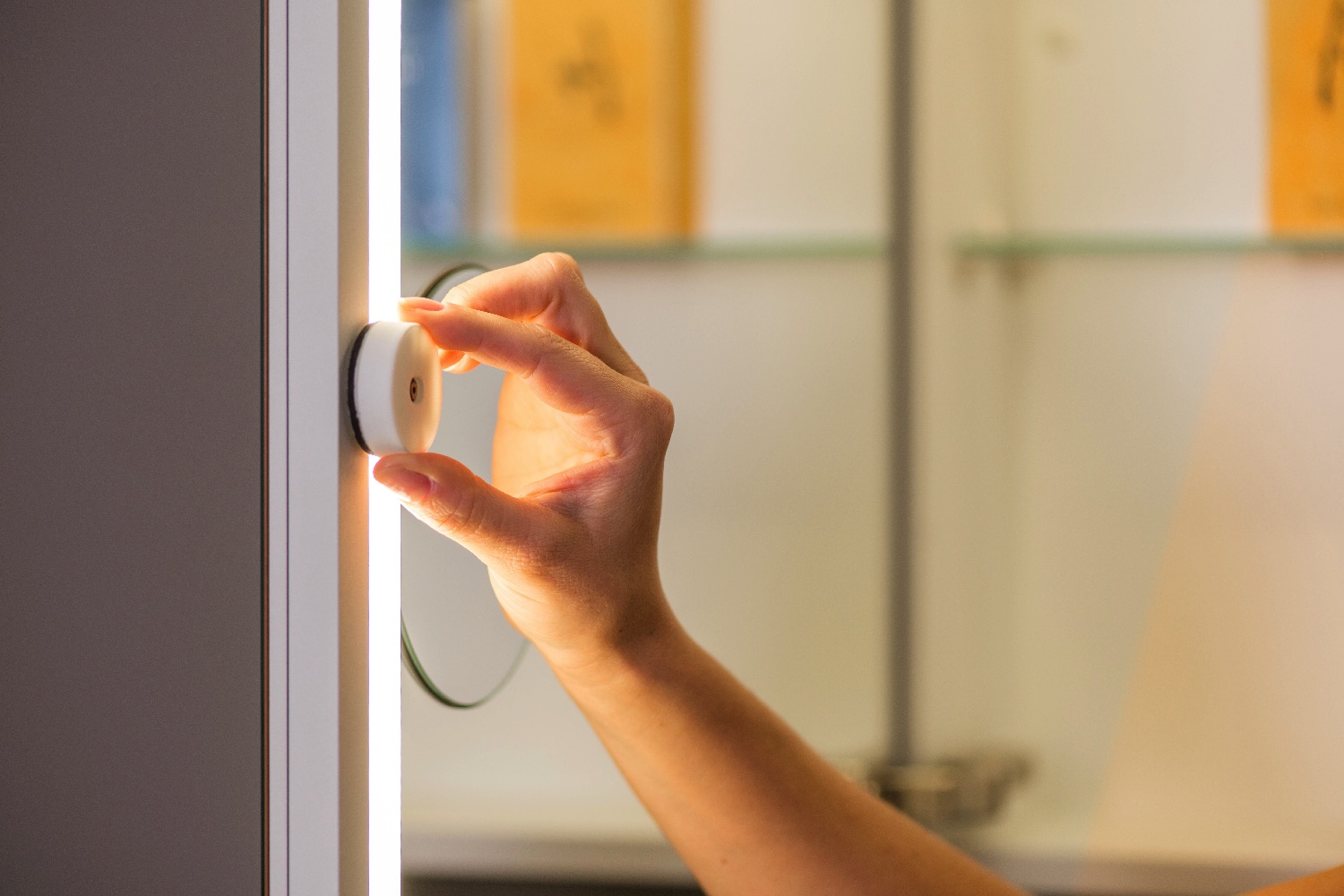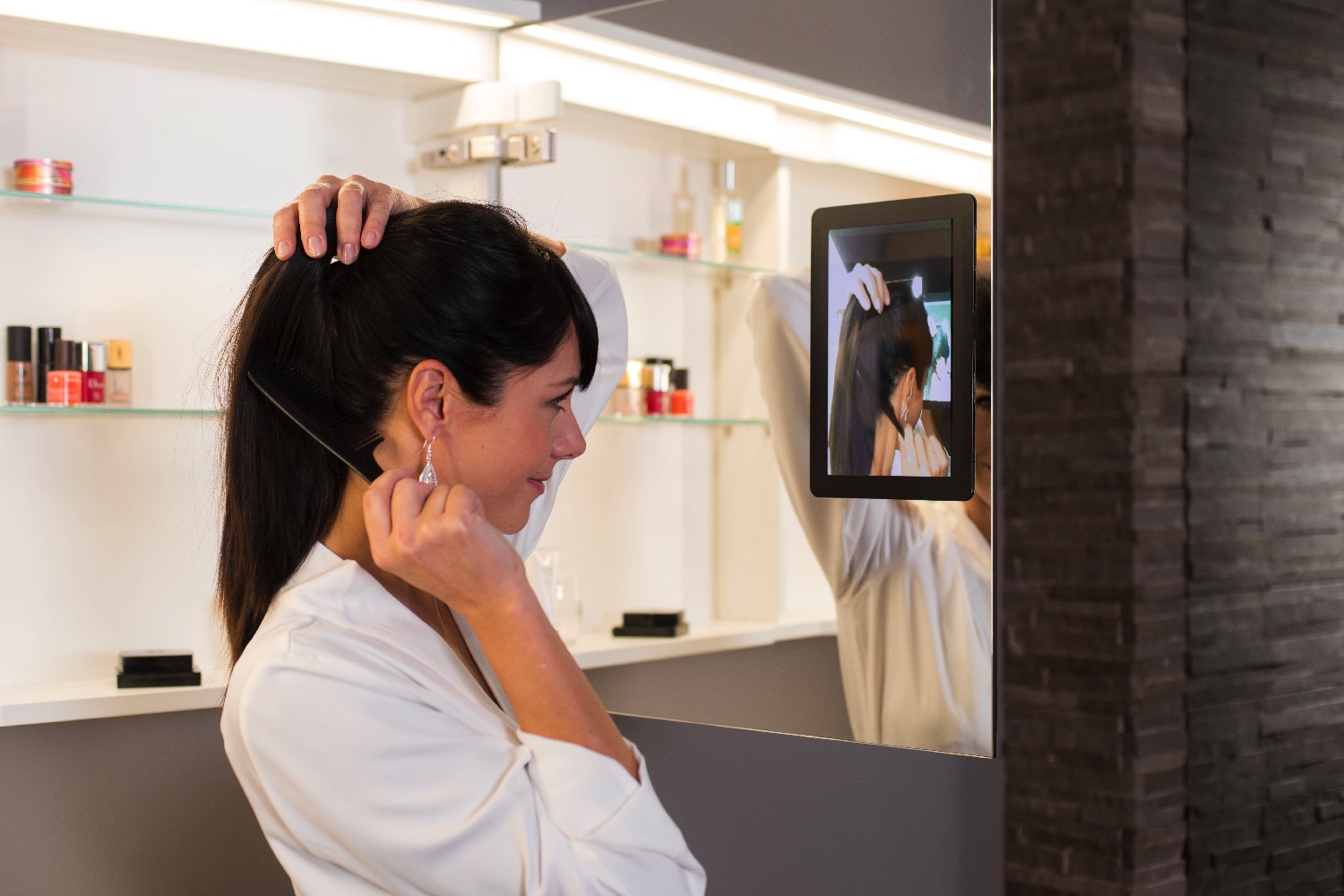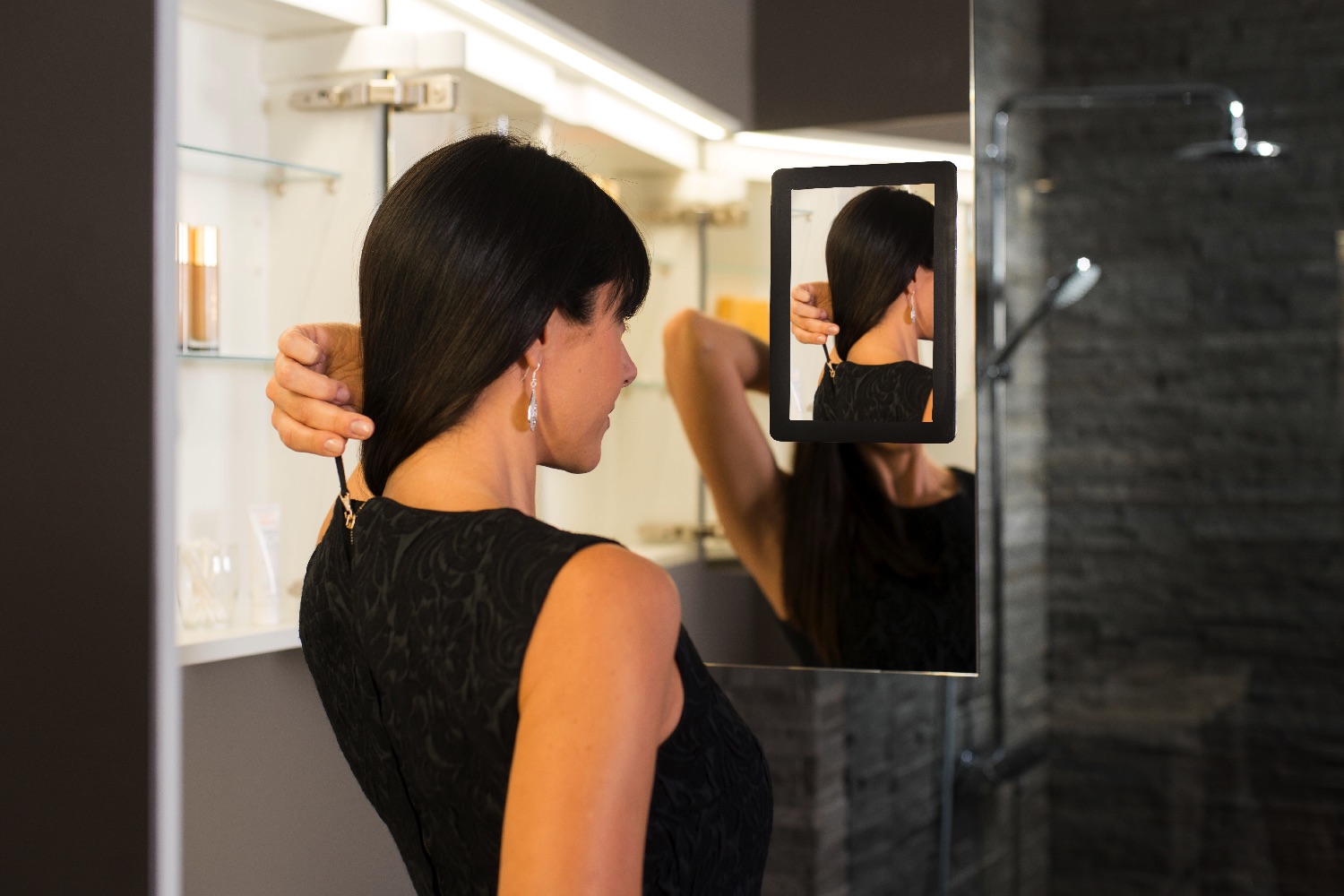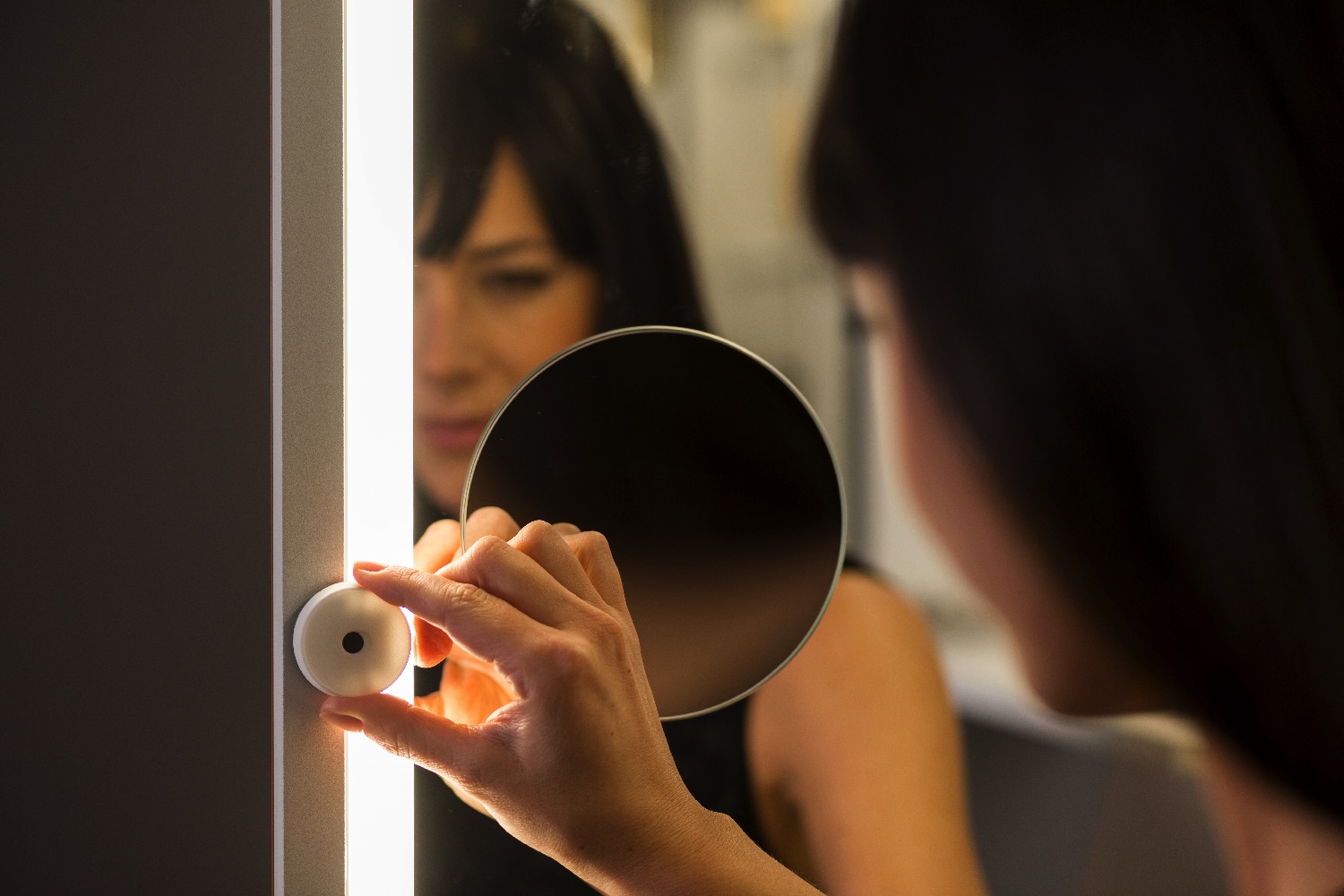It’s a simple, but low-tech solution — so obviously it needs to be disrupted by the tech world’s best and brightest.
Enter Imec, a world-leading R&D innovation center which specializes in nanoelectronics and groundbreaking digital technologies. Together with two Belgian design companies, Deknudt Mirrors and Group De Keyzer, Imec has developed a smart bathroom mirror, allowing users to see both their front and rear view simultaneously.
“The system consists of a high-definition display, some electronics, a camera, and smart algorithms to add the intelligence,” Peter Lemmens, project lead on the mirror, told Digital Trends. “Those are seamlessly integrated with one another.”
The mirror is part of a bathroom cabinet composed of two pivoting panels, each with a mirror inside. In the left panel, an integrated camera streams images in real time and high resolution to a tablet-sized display fitted inside the right panel. LED lighting then makes sure that the scene is as perfectly lit as a Hollywood movie.
“It’s not enough to just give an image good enough to let someone put on a necklace or zip up their dress,” Lemmens continued. “That doesn’t require high resolution imaging. But what we were asked to create was a system detailed enough that people could see the individual tiny hairs on their skin. These are hard to see normally, but particularly difficult in bathrooms where the lighting is not necessarily optimized.”
While the research was created for high-end design purposes, Lemmens said he wouldn’t be surprised to see such mirrors become more commonplace in the years to come.
“I think it’s only a matter of time before this winds up with the consumer,” he said. “There’s a growing activity around specialty imaging systems and smart cameras. The ability to add additional features or provide more information, in challenging conditions, is something we do a lot at Imec. These tools are often designed for organizations like space agencies — but after a couple of years they trickle down to ordinary consumers. This is something we see a large potential for.”
Editors' Recommendations
- The latest Philips smart lock can read your palm to open your front door
- Should you buy a new smart lock or retrofit your existing deadbolt?
- What is IFTTT and how can you use it in your smart home?
- How to program your smart hub to scare the pants off of you
- Fluid One gives you point-and-click control of your smart home, from your smartphone
